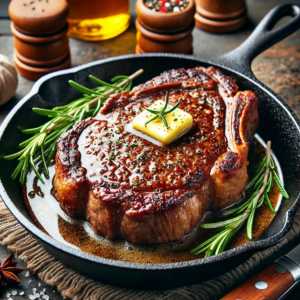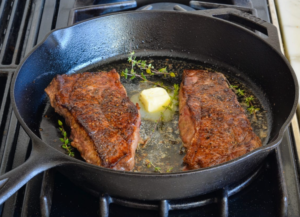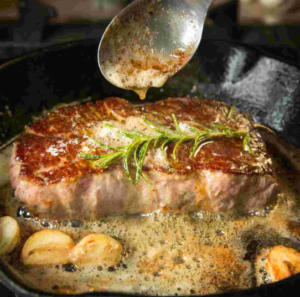Cooking the perfect ribeye steak often starts with one crucial question: should you use oil, butter, or both? Each choice impacts flavor, sear, and texture, but making the right decision doesn’t have to be complicated. Let’s explore the key differences, expert techniques, and common pitfalls for flawless steak every time.
Why Oil or Butter for Ribeye Matters

When searing ribeye, the choice of cooking fat is critical. High heat is essential to achieve a golden crust, and this is where the smoke point plays a significant role.
- Butter: With a low smoke point (~300°F), butter burns easily but adds a rich, savory flavor.
- Oil: High-smoke-point oils like avocado or canola oil are better for high-heat cooking and produce a perfect sear.
Still unsure? Learn more about smoke points and cooking fats with this comprehensive guide.
Achieving the Perfect Ribeye Crust

Flavor and technique go hand in hand. When deciding between oil or butter for ribeye, consider the desired outcome:
- Using Oil: Neutral oils such as canola or grapeseed let the natural flavors of ribeye shine.
- Using Butter: For a decadent, savory crust, butter adds richness and complements the steak’s flavor.
- Combining Both: Start with oil to sear at high heat, then finish with butter for added depth.
For more inspiration, check out this guide on how to cook cowboy ribeye steak.
Tips and Techniques
Searing with Oil
Using oil prevents burning during high-heat cooking:
- Heat your skillet until it’s smoking hot.
- Add a small amount of high-smoke-point oil.
- Place the ribeye in the skillet, letting it sear for 2–3 minutes on each side.
Adding Butter
Butter is best added towards the end of cooking:
- After searing with oil, reduce the heat slightly.
- Add butter and spoon the melted fat over the ribeye for a rich glaze.
Combining oil and butter is a foolproof way to achieve a beautifully cooked steak.

Common Mistakes to Avoid
Even seasoned cooks make errors when preparing ribeye. Avoid these pitfalls:
- Burning Butter: Always add butter at the end to prevent scorching.
- Wrong Oil Choices: Low-smoke-point oils like extra virgin olive oil can burn and ruin the flavor.
- Overcrowding: Too many steaks in the pan can lead to steaming instead of searing.
For additional tips, explore this how-to guide on cooking steak.
FAQs About Cooking Ribeye
Is it better to cook ribeye with oil or butter?
It depends. Use oil for a high-heat sear and butter for flavor. Combining both often yields the best results.
What’s the best oil for ribeye?
Choose oils with a high smoke point, such as avocado or grapeseed oil.
Can I use olive oil for ribeye?
Yes, but light olive oil is better due to its higher smoke point.
Conclusion
So, is oil or butter for ribeye the better choice? The answer lies in your priorities. For a flawless sear, start with oil. To enhance flavor, finish with butter. Combining both will ensure a tender, flavorful, and perfectly cooked steak every time. Experiment with these techniques, and don’t forget to check out our guide to mastering cowboy steaks for more inspiration.
Experiment with these techniques and enjoy your perfect ribeye!
